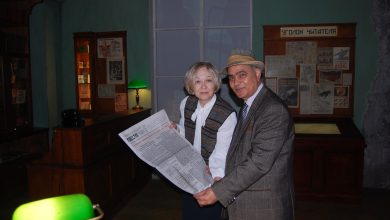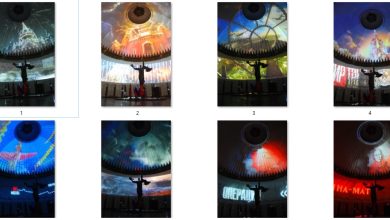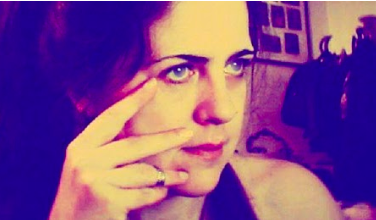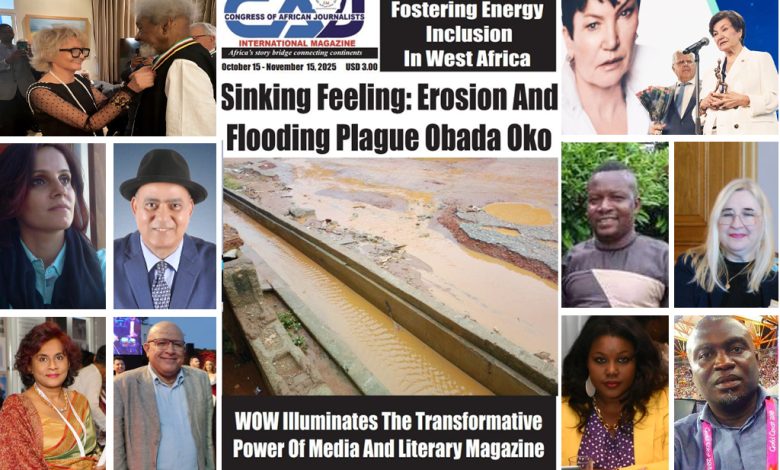
In the October 2025 edition of the Congress of African Journalists (CAJ) International Magazine, words come alive as pictures — vivid, layered, and profoundly human. This is not merely a magazine; it is a visual atlas of the African condition, a continent speaking in ten compelling tones that merge reportage, reflection, and renaissance.
The magazine’s editorial board includes Michael Adeboboye from Nigeria, serving as Editor-in-Chief and CAJ Chairman, and Ashraf Aboul-Yazid from Egypt, serving as CAJ Secretary General.
From the cover story, “Sinking Feeling: Erosion and Flooding Plague Obada Oko,” the lens opens on a Nigerian town battling both natural and historical tides. Through the eyes of its people, we witness a landscape eroding under the pressure of climate change, yet anchored by resilience — where “Obada Oko Day” becomes not only a festival but a declaration of survival. The photographs from Ogun State carry the texture of red soil, the weight of memory, and the undying rhythm of local pride.
The journey continues into Nigeria’s oil renaissance, a tableau of steel, fire, and ambition. Dangote’s monumental refinery project is painted here as both symbol and struggle — the shimmer of prosperity set against the grit of power tussles and environmental reckoning. The imagery of refineries, pipelines, and picketing workers tells a story as cinematic as it is real: a portrait of modern Africa reinventing itself.
In Ethiopia, “Irreecha: Living Thanksgiving” by Tiblets Tesfaye Dejene unfolds as an epic of color and spirit — a tapestry of unity where water, sky, and humanity merge. Her prose and images resurrect a sacred truth: that blackness in Africa has always meant creation, not negation.
Political expression finds its pictorial power in “Africa at the United Nations” by Donald Tlaka, capturing African leaders beneath the emblem of the UN, their gestures caught between diplomacy and defiance. His question lingers like an echo across these pages: is Africa still performing for the gallery, or finally scripting its destiny?
From Benin to Senegal, Dela Ahiawor’s “Fostering Energy Inclusion in West Africa” documents sunlight as salvation. Solar panels glisten across the savannah, representing more than technology — they are mirrors of hope, reflecting a continent shifting toward clean and inclusive futures.
In a lyrical interlude, Alexandra Ochirova’s essay on “Humanitarian Modernization” reframes sustainability through a spiritual lens, accompanied by portraits of people whose humanity transcends the data of development.
The magazine’s cultural portfolio flourishes in Fatima Al-Zahraa Hassan’s cinematic feature, “Hollywood Princess Wears the Crown of Monaco,” and Khalid Suleiman’s piece, “Bridging Cultures: Egypt and Tunisia Celebrate Art, History, and Friendship.” Both capture motion — in film, in art, in the diplomacy of beauty — showing that Africa’s narrative is not isolation but dialogue.
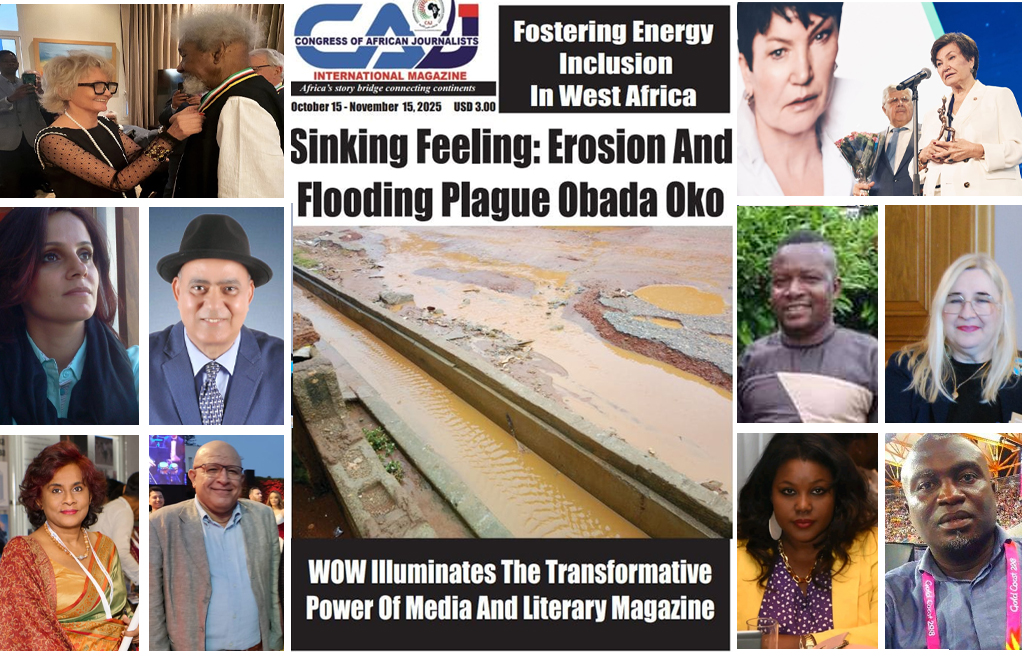
The Round Table on Media and Literary Magazines, moderated by Ashraf Aboul-Yazid, becomes a luminous convergence of intellects. The photographs of the session — writers from Russia, Algeria, Oman, and Sri Lanka leaning into thought — reveal what words alone cannot: that global literature is now a shared pulse.
Finally, Inna Natcharova’s “Cleopatra… Through Russian Eyes!” reimagines Egypt’s timeless queen in a literary frame, turning history into a mirror for modern storytelling itself — the union of fact, feeling, and fascination.
In this issue, CAJ Magazine transforms journalism into art. Each story is a canvas, each image a heartbeat. Across its ten features, Africa emerges not as a backdrop but as the subject — diverse, defiant, and dazzling. This is journalism that sees — not only through the camera lens, but through the eyes of empathy.
In 2025, CAJ stands not just for reporting Africa, but for reimagining it — one story, one photograph, one truth at a time.

